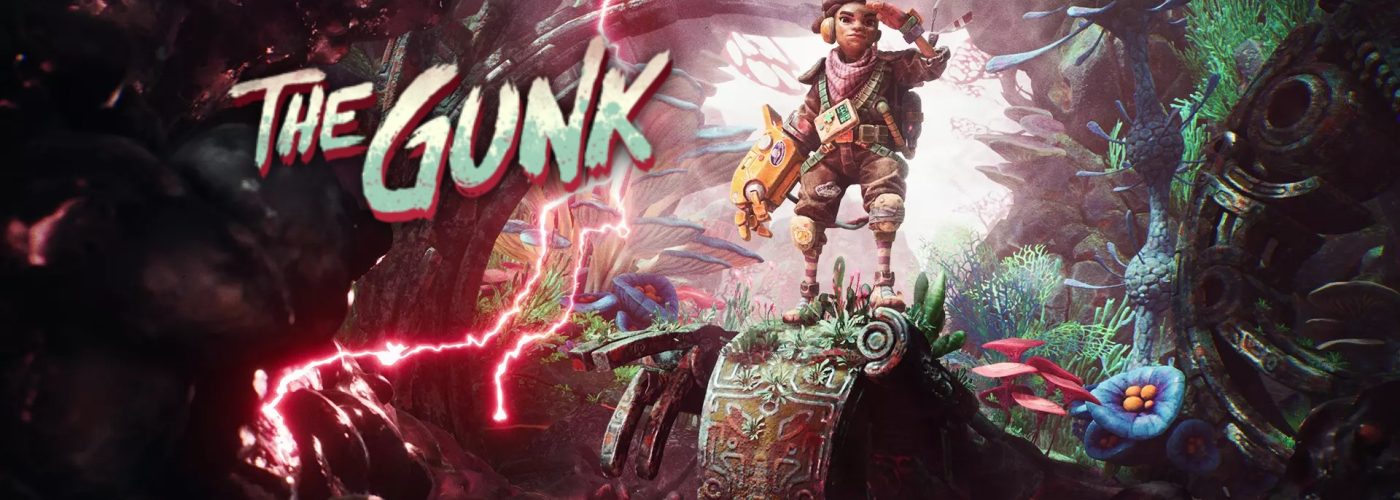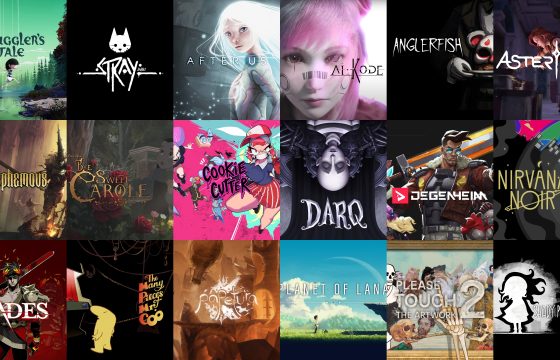A poetic journey through a world longing to breathe again.
The Gunk is an action-adventure game with strong exploratory elements and a distinct focus on environmental storytelling, designed to transport players into an alien world brimming with mystery and challenge. From its opening moments, it captivates with a distinct atmosphere and a genuine sense of curiosity – a call to uncover, to restore, and to understand.
At its heart lies the exploration of a strange, corrupted planet, overrun by a viscous substance known as the “Gunk.” This parasitic matter chokes the land, infecting flora and fauna alike. Players take on the role of Rani, a space explorer whose mission goes beyond scavenging for resources. Her journey becomes one of discovery – of the Gunk’s origins, its ecological impact, and ultimately, her own place within this decaying yet beautiful world.
The gameplay strikes a careful balance between action and contemplation. One moment you’re clearing infected growths and fending off mutated creatures; the next, you’re quietly surveying alien landscapes, piecing together the planet’s history through environmental clues and remnants of those who came before. This rhythm keeps the experience fresh and absorbing, blending moments of tension with stretches of quiet reflection. Each region of the planet carries its own visual identity and distinct ecosystem, giving the world a sense of coherence and vitality. These diverse environments don’t just serve as backdrops – they challenge and reward the player, constantly inviting deeper engagement.
Emotional connection is also key to The Gunk’s success. Rani’s curiosity and determination provide the emotional core of the story, grounding its sci-fi premise in something deeply human. Rather than relying on lengthy cutscenes or exposition, the narrative unfolds organically through its setting, its mood, and its subtle environmental details. The result is an experience that feels alive, immersive, and genuinely personal.
In the end, The Gunk offers an engaging and quietly affecting journey for fans of exploration-driven adventures. By blending light combat, environmental restoration, and puzzle-solving within a cohesive world, it delivers an experience that is as thoughtful as it is visually captivating. It’s a game about renewal – of worlds, of life, and perhaps even of the player’s own sense of wonder.
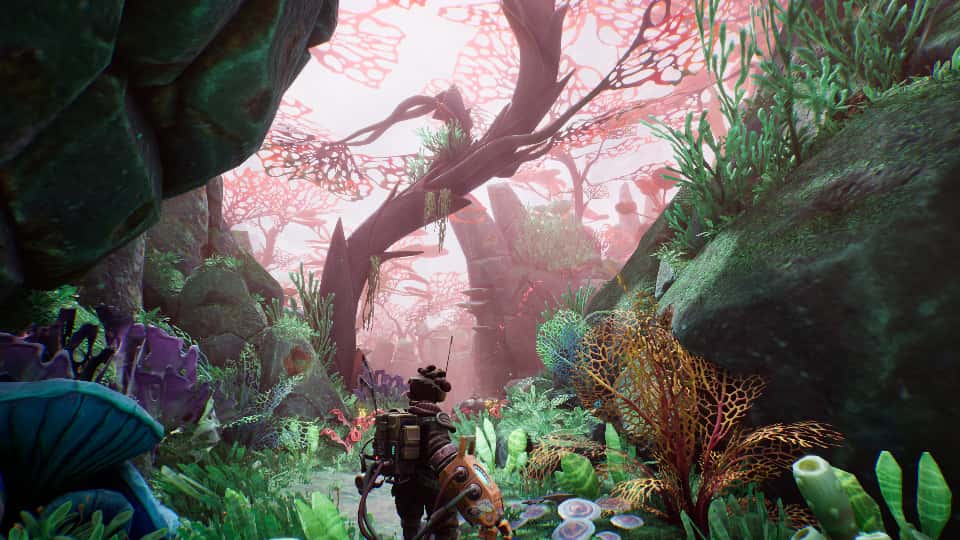

The Many Faces Behind the Game
The Gunk was developed by Image & Form, an independent studio based in the Netherlands best known for its SteamWorld series – a collection of games that earned a devoted following for their tight mechanics, distinctive art style, and strong environmental storytelling. While smaller than the industry’s major studios, Image & Form has long stood out for its ability to blend aesthetics, gameplay, and narrative into cohesive, characterful experiences. With The Gunk, the team set its sights higher, tackling a more ambitious project that experiments with new technologies, gameplay systems, and storytelling approaches, all while staying true to its creative roots. The result is a vivid, believable alien world filled with intricate life and detail.
What really defines Image & Form is its attention to detail. Every visual and mechanical element – from the look and movement of the Gunk itself to the suction tool Rani uses to clean it – has been crafted to make the experience feel as immersive as possible. Collaboration between designers, sound engineers, and level designers ensures that each area feels alive, functioning as more than just a backdrop. Every environment behaves like an ecosystem, complete with its own rhythm, rules, and challenges.
On the technical side, the studio built The Gunk using Unreal Engine 4, a choice that allowed for richly detailed environments, natural lighting, and fluid animation, all balanced carefully to maintain solid performance.
Published by Thunderful Publishing, The Gunk also benefited from the support of a publisher known for backing independent developers and championing originality over established franchises. Thunderful provided the resources and breathing room the team needed to deliver on its vision, helping ensure a smooth multi-platform release without creative compromise.
Much of Image & Form’s strength comes from its diverse background. The team brings together talent from across the European games industry, blending a variety of skills and perspectives into a unified creative vision. That diversity shows in the game’s design, which weaves together exploration, action, environmental storytelling, and light puzzle-solving into a single cohesive experience. The studio’s relatively small size also works to its advantage, fostering close communication, quick iteration, and a clear creative direction – the kind of efficiency large teams often struggle to maintain.
In the end, The Gunk strikes a careful balance between creative ambition and technical discipline. With Thunderful’s support, Image & Form has crafted a game that’s as artful as it is engaging – proof that some of the industry’s most distinctive experiences still come from smaller, passionate teams. It’s a thoughtful reminder that great ideas, when nurtured with care and precision, can thrive well beyond the reach of the industry’s biggest names.
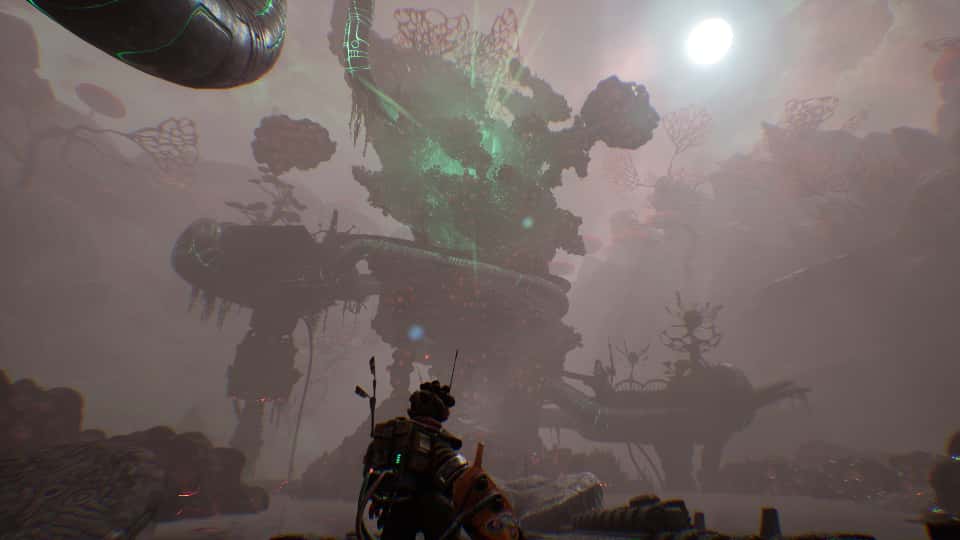

A Deceptively Simple Story
The narrative of The Gunk follows Rani, a space explorer who, alongside her loyal robotic companion Becks, lands on what appears to be a pristine, unspoiled planet in search of valuable resources. What begins as a routine expedition soon unfolds into a far more intricate and perilous journey, as the world reveals itself to be overrun by the Gunk – a mysterious, viscous substance that corrodes everything it touches and threatens to unravel the planet’s fragile ecosystem.
Yet, the Gunk is more than just a physical menace. It stands as a symbol of corruption and decay, infecting native lifeforms and transforming them into hostile creatures while warping the environment around them. The story unfolds not through lengthy exposition or cinematic cutscenes, but through carefully crafted environmental storytelling. Abandoned outposts, fragmented audio logs, and relics of past expeditions gradually reveal the planet’s history and the mystery surrounding the Gunk’s origin.
Central to the experience is the relationship between Rani and Becks. Their exchanges – witty, tense, and often quietly intimate – form the emotional backbone of the game. Becks isn’t just a mechanical sidekick, but a true companion whose presence humanizes the isolation of exploration. Through their dialogue, the narrative gains depth and warmth, allowing moments of silence and wonder to resonate all the more strongly.
At its core, The Gunk is a story about restoration. Rani’s mission to cleanse the corruption serves as both a gameplay mechanic and a metaphor for renewal. Each environment reflects a stage of this transformation – from overgrown jungles and polluted valleys to ancient ruins buried beneath the planet’s surface. These landscapes are not mere backdrops, but living narrative spaces, evolving as Rani restores balance to the world.
The game’s mystery unfolds with quiet confidence. Rather than overwhelming the player with exposition, The Gunk lets curiosity lead the way. Answers are earned, not handed out – hidden in observations, environmental cues, and subtle storytelling threads. It’s a restrained approach that rewards attentiveness and gives discovery real emotional weight.
Ultimately, The Gunk blends adventure, environmental reflection, and human connection into a cohesive narrative experience. Beneath its approachable structure lies a thoughtful meditation on exploitation, responsibility, and the fragile relationship between technology and nature.

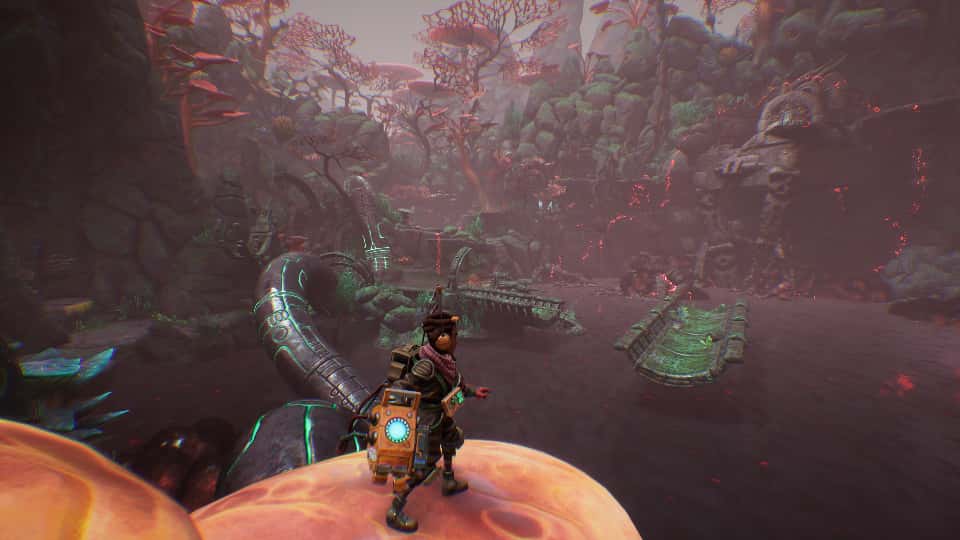
The Poetry of Purification
The narrative of The Gunk stands out for its environmental and immersive design – one where the story isn’t conveyed solely through dialogue or cutscenes, but emerges organically through the player’s interaction with the world itself. Rather than being read, the narrative is experienced – a living, breathing ecosystem that invites players to observe, interpret, and understand it piece by piece. In this sense, storytelling and gameplay are inseparable: every action, from absorbing the Gunk to examining artefacts and wildlife, becomes part of how the player learns about the planet’s history and the forces that shape it.
At its core lies a delicate interplay between corruption and renewal. The Gunk embodies both a physical and symbolic contamination – mutated creatures, eroded landscapes, and decaying technologies serve as tangible signs of imbalance. Rani’s mission to cleanse the planet becomes a broader allegory for restoration and rebirth, underscoring how every action leaves a mark on the world around us. The game quietly invites reflection on humanity’s responsibility toward nature, revealing how even the best intentions can alter ecosystems in profound, sometimes devastating ways. Players aren’t simply tasked with survival; they’re encouraged to consider the fragile equilibrium that sustains life in all its forms.
Equally vital is the theme of companionship and cooperation. Becks, Rani’s robotic partner, serves not merely as a mechanical assistant but as the emotional counterpoint to the protagonist’s solitude. Their exchanges – by turns humorous, sincere, and contemplative – infuse warmth into the alien setting. Through their relationship, The Gunk bridges the physical and emotional, weaving a layered narrative that balances tension and tenderness, peril and connection.
From a worldbuilding perspective, The Gunk embraces the spirit of exploration and discovery. Audio logs, ancient ruins, and traces of lost civilizations reveal fragments of a larger mystery – the origins of the Gunk and the planet’s forgotten past. This non-linear storytelling rewards curiosity and attention to detail, letting the story emerge naturally through exploration rather than exposition. It’s a narrative that’s never forced or didactic, but one that grows with the player’s understanding – intimate, gradual, and quietly profound.
Ultimately, The Gunk is a story of resilience, hope, and renewal. Each purified zone, each creature freed from corruption, marks a small yet significant victory – a tangible act of restoration amid decay. Through its quiet rhythm of cleansing and rebirth, the game delivers a lasting message: even in the most desolate worlds, life can find a way to flourish again – if we choose to nurture it.


The Craft Beneath the Surface
The technical and artistic direction of The Gunk stands as one of its defining achievements, shaping not just the game’s visual identity but its emotional and sensory impact. From the very first moments, it’s clear how much care has gone into every detail – from the texture of alien soil to the fluid movement of strange lifeforms. The result is a world that feels cohesive, vibrant, and unmistakably alive. The planet itself unfolds as a dynamic ecosystem, where lush forests, dark caverns, sweeping canyons, and remnants of forgotten technology blend seamlessly into a continuous landscape that invites exploration and curiosity at every turn.
Color design plays a vital narrative role. The deep, oily tones of the Gunk stand in stark contrast to the luminous greens and golds of restored environments, creating an immediate visual language of corruption and renewal. Each transformation offers players a small but deeply satisfying sense of progress. The art direction extends to every facet of the world: creatures, structures, and characters are rendered with coherence and intent, each reflecting the balance – or imbalance – of their surroundings. Corrupted lifeforms twist and warp under the influence of the Gunk, while purified beings regain their natural grace and rhythm. This visual storytelling is not just aesthetic flourish; it’s an active part of the gameplay loop, providing players with intuitive cues about danger, restoration, and environmental health.
Powered by Unreal Engine 4, The Gunk delivers a technically impressive experience across all platforms. Dynamic lighting, fluid animations, and seamless transitions between zones help maintain a strong sense of immersion, ensuring that players never feel torn out of the experience. The engine’s visual fidelity supports detailed particle effects, reflections, and environmental responses that make the alien world feel tangible and reactive. Movements – whether Rani’s careful exploration, Becks’ mechanical gestures, or the slithering motion of corrupted biomass – flow naturally, reinforcing the game’s organic atmosphere.
The level design achieves a delicate balance between freedom and focus. Exploration is constantly rewarded, yet environments remain readable and well-structured. Points of interest, secrets, and environmental puzzles are distributed thoughtfully, maintaining a satisfying rhythm of discovery without ever feeling forced. The Gunk itself is a triumph of visual and tactile design: its fluid consistency, weight, and responsiveness lend a surprising sense of realism, making each act of purification feel impactful and gratifying. Environmental storytelling is subtly woven through secondary details – plants, ruins, and debris that quietly hint at the planet’s history – allowing the world to speak for itself without resorting to exposition.
Lighting and shadow are employed with remarkable finesse, guiding the player’s gaze, setting mood, and amplifying tension during moments of decay or danger. The overall consistency between environment, creature, and technological design gives The Gunk a strong, distinctive identity – one that remains etched in the player’s memory long after the credits roll.
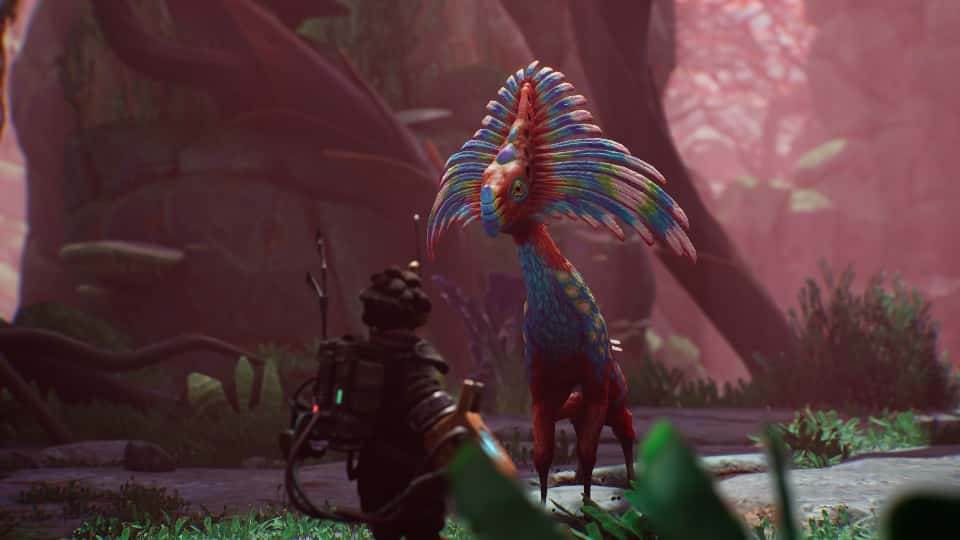
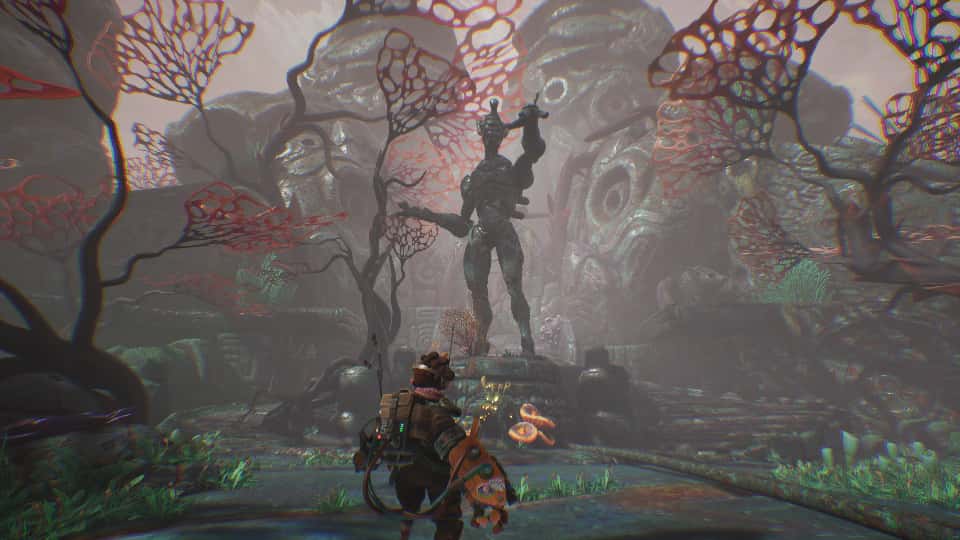
Echoes of a Living World
The technical and sound design of The Gunk form the backbone of its immersive power, shaping an experience that engages players on multiple sensory levels. Its technical accomplishment extends well beyond visuals or engine performance – it lies in the seamless fusion of environmental audio, musical composition, and sound design into a unified, resonant whole.
The ambient soundscape, in particular, is masterfully crafted. The alien world that Rani and Becks explore hums with organic life: the soft rustle of alien flora, the distant cries of unseen creatures, the gurgle of the Gunk, and the whisper of wind threading through stone canyons – all combine to create a world that feels alive and breathing. These sounds do more than embellish the setting; they convey information intuitively, anchoring the player in a space that feels both believable and dynamic.
The score, too, shows remarkable restraint and intelligence. Rather than overwhelming the experience, it underlines key emotional moments – gentle, reflective melodies accompany exploration, while tense, percussive cues rise during encounters with corruption or peril. This subtle interplay between silence and sound maintains balance and emotional rhythm, allowing the player to move naturally between calm discovery and heightened tension without sensory overload.
Special care has been devoted to the audio design surrounding the Gunk itself. Every action – absorbing, cleansing, or manipulating the viscous substance – is paired with finely tuned effects that provide immediate, gratifying feedback. This tactile precision amplifies the sense of control and accomplishment, as each gesture resonates both visually and aurally. The synergy between animation and sound lends weight to every movement, making purification feel genuinely satisfying.
Technically, the game takes full advantage of spatial and 3D audio, enabling players to perceive direction and distance with striking accuracy. This not only enriches exploration but also heightens suspense: the echo of a distant creature or the subtle hum of corruption can quietly signal danger or discovery. Spatial audio here doesn’t just enhance realism – it deepens emotional engagement, weaving tension, surprise, and wonder seamlessly into the experience.
Every element within The Gunk’s world has its own distinct sonic signature: creatures, tools, and environmental objects all possess characteristic sounds carefully aligned with their visual identity and function. This meticulous attention to detail adds a profound sense of depth and cohesion, ensuring that every discovery feels purposeful and alive.
Dialogue, too, benefits from this careful design. Conversations between Rani and Becks are crisply mixed against the ambient backdrop, maintaining clarity without ever breaking immersion. Subtle pauses, tone shifts, and emotional inflections bring their personalities vividly to life, complementing the environmental storytelling rather than disrupting it.
Ultimately, The Gunk’s technical and audio design are far more than aesthetic flourishes – they are the lifeblood of its immersion. Through its layered soundscape, the player doesn’t merely see this world but feels and inhabits it. This harmony of sight and sound transforms exploration into experience, making every moment of silence, resonance, and renewal part of the game’s quiet emotional power.
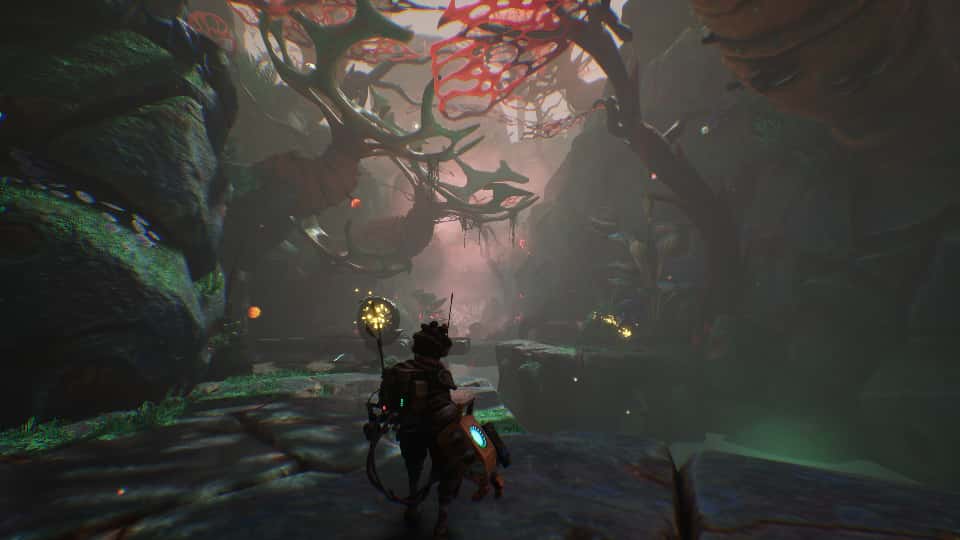
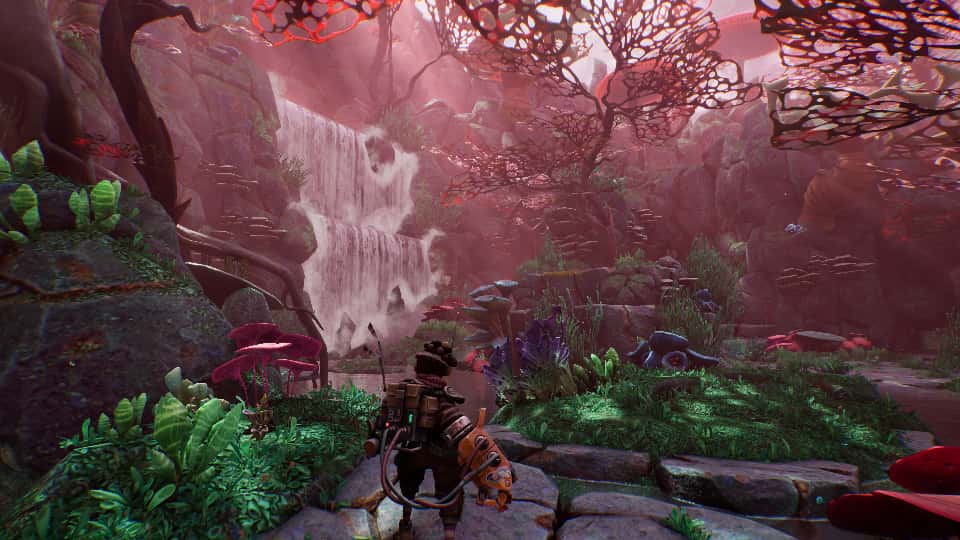
Narrative, Design, and World-Building in Perfect Synchrony
World-building stands as one of The Gunk’s most defining and accomplished achievements – a meticulously realised ecosystem where every texture, sound, and detail contributes to a vivid sense of life and cohesion. The alien planet explored by Rani and Becks is far more than a static backdrop; it’s a living organism – breathing, growing, and reacting – where flora, fauna, ancient technology, and the spreading corruption of the Gunk coexist and collide.
Each area is crafted with both ecological and narrative purpose: corrupted zones twist into grotesque shapes of decay, while purified regions burst back into color and natural harmony. The result is a tangible sense of progression and consequence – a world that heals and evolves through the player’s own actions.
Exploration forms the backbone of The Gunk’s experience. The planet unfolds through semi-open zones threaded with primary and secondary paths that reward curiosity and experimentation. Every obstacle, secret, and point of interest feels intentionally placed, encouraging players to retrace their steps with new abilities to uncover hidden layers of design. This careful balance keeps exploration dynamic and organic, guiding attention naturally without resorting to strict linearity.
At the heart of the gameplay lies the act of purification. Using her specialised equipment, Rani absorbs and neutralises the viscous corruption, engaging dynamically with both the environment and its creatures. This central mechanic fuses narrative and gameplay with elegance: the Gunk’s visual and auditory corruption mirrors the planet’s pain, while the act of cleansing delivers an immediate and gratifying sense of renewal. Each encounter reinforces the illusion of a reactive ecosystem – one that transforms visibly in response to the player’s touch.
The world’s inhabitants further enrich its identity. Each species has its own behavioural patterns and distinctive design, serving both mechanical and storytelling functions. Some embody the raw aggression of corruption itself, others symbolise adaptation and survival, subtly reflecting the planet’s shifting balance. Though the AI isn’t on the scale of sprawling open-world titles, it succeeds in maintaining tension, demanding quick thinking, and preserving immersion. Every encounter feels meaningful, strengthening the impression of a world that truly lives and breathes.
Puzzle-solving and navigation challenges add a further layer of depth. These moments emerge naturally from the environment rather than existing as isolated sequences. Success relies on careful observation – reading the terrain, understanding how the Gunk interacts with structures, and using tools creatively. This seamless integration maintains variety without breaking momentum, transforming exploration into a reflective and rewarding process.
Level design itself serves as an instrument of storytelling. Abandoned installations, technological relics, and the lingering scars of corruption all tell silent stories, enriching the lore without overt exposition. Each area feels both functional and meaningful – a space to play, but also a narrative fragment that contributes to the planet’s broader identity. This delicate balance between freedom and guidance keeps the player grounded yet constantly intrigued.
Progression in The Gunk is inseparable from its evolving environment. Early zones introduce ecosystems and mechanics with gentle pacing, while later areas escalate in visual complexity, environmental hazards, and emotional tone. This gradual layering of discovery and challenge sustains a powerful sense of growth – of both the world and the player evolving in tandem.
Ultimately, The Gunk achieves a rare harmony: a seamless fusion of design, storytelling, and environmental immersion. Its world is not a static stage but a responsive, evolving character – one that breathes, suffers, and heals in rhythm with the player’s journey.


Acclaimed for Its Vision
Evaluating The Gunk requires a holistic view – one that considers its technical craft, narrative intent, and overall player experience. Taken as a whole, it’s a compact yet compelling title that blends artistic vision with approachable design, resulting in an experience that feels both cohesive and emotionally engaging.
At its core, The Gunk shines through its world-building. Every location feels alive and interconnected, reacting meaningfully to the player’s actions. The act of cleansing corrupted zones doesn’t just change the environment visually – it delivers a palpable sense of restoration and progress. This cyclical rhythm of decay and renewal defines the game’s emotional heartbeat, transforming exploration into a deeply satisfying pursuit.
Visually, the game is striking. Its art direction thrives on contrast – the murky, oppressive tones of corrupted landscapes give way to radiant, rejuvenated ecosystems once purified. The careful interplay of light, color, and texture creates a vivid sense of place, while the detailed flora, fauna, and alien remnants lend authenticity and depth to each area.
The sound design complements this visual richness with remarkable subtlety. Ambient audio and a restrained, atmospheric score work together to heighten immersion, emphasizing moments of tension, solitude, and wonder. The core purification mechanic is intuitive and responsive, offering immediate feedback that makes every action feel consequential. By alternating between exploration, light combat, and puzzle-solving, the game maintains a steady, rewarding pace that avoids repetition and keeps players engaged from start to finish.
Still, The Gunk isn’t without its limitations. Its short runtime and relatively simple enemy encounters may leave some players wanting more. Combat, though serviceable, lacks the depth or variety seen in larger-scale titles. Similarly, while the relationship between Rani and Becks brings warmth and personality to the narrative, the story itself remains understated – more a gentle thread than a driving force. The world’s lore, though intriguing, is hinted at rather than fully explored.
Even so, The Gunk succeeds where it matters most. Its artistry, atmosphere, and sense of purpose elevate what could have been a simple adventure into something memorable and resonant. It may not redefine its genre, but it offers a rare kind of serenity and satisfaction – a world that rewards curiosity, care, and contemplation.
Ultimately, The Gunk stands as a testament to focused, thoughtfully crafted design. Its brevity becomes part of its allure, and its simplicity never diminishes its heart. Beautifully realized, quietly affecting, and refreshingly cohesive, it’s an experience that endures – not through spectacle, but through sincerity.


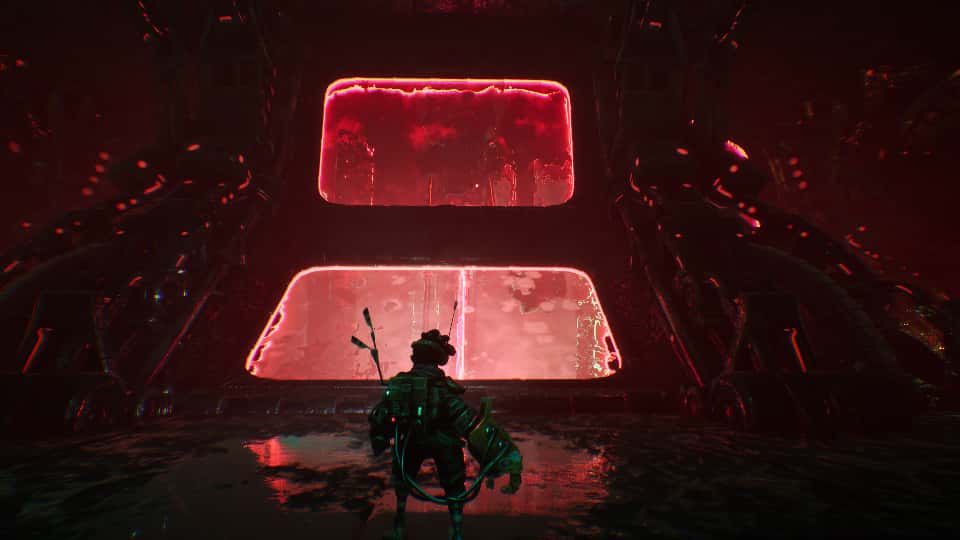
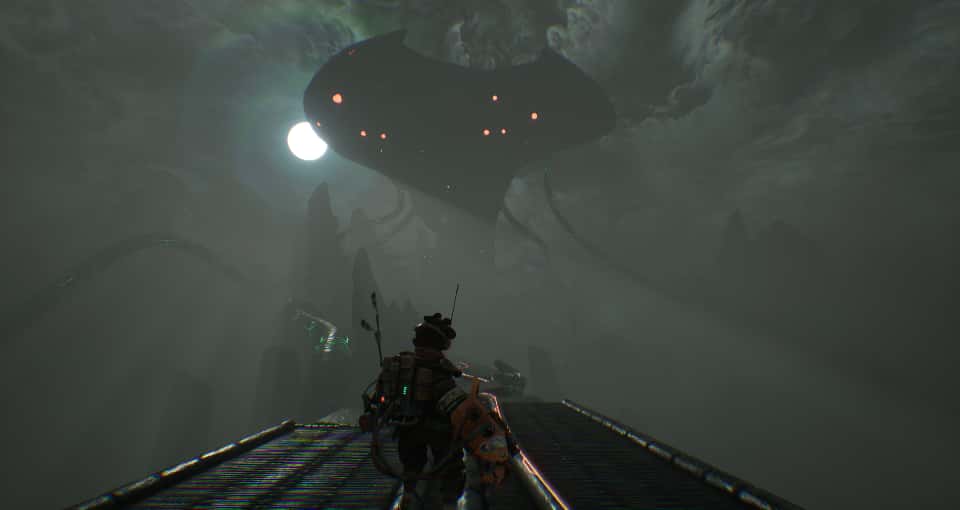
The Gunk
PRO
- Immersive World-Building: The Gunk’s alien planet feels alive, with detailed environments and creatures that react to the player’s actions. Exploration is consistently rewarding, anchored by a believable and dynamic ecosystem.
- Intuitive and Satisfying Gameplay: The core mechanic of purifying the Gunk is simple to understand yet deeply gratifying. Every cleansed area produces visible and meaningful changes in the environment and its inhabitants.
- Striking Artistic Design: The game excels in color, lighting, and contrast between corrupted and purified zones. Each location tells a story through its flora, fauna, and alien architecture, making exploration visually compelling.
- Rich Sound Design and Music: Environmental audio and a carefully crafted soundtrack enhance both tension and tranquility, creating a fully immersive sensory experience.
- Strong Character and Environmental Narrative: The relationship between Rani and Becks adds emotional depth, while environmental storytelling conveys the planet’s history and corruption without disrupting gameplay.
- Variety Across Areas: Despite a relatively short playtime, each zone features distinct visual and environmental elements, encouraging players to explore thoroughly.
CON
- Limited Length: The adventure is relatively short, with a finite number of areas, which may affect perceived content value.
- Simple Combat: Enemy AI and combat mechanics are straightforward. Players seeking challenging or strategic battles may find the combat underwhelming.
- Repetitive Mechanics: While satisfying, the Gunk purification can feel repetitive in later stages, especially for players seeking more varied action.
- Lightly Developed Secondary Narrative: The main story is clear, but certain lore elements and environmental backstory are not fully explored.
- Modest Strategic Depth: Exploration and combat rely more on observation and timing than complex strategy, which may reduce engagement for veteran players.

